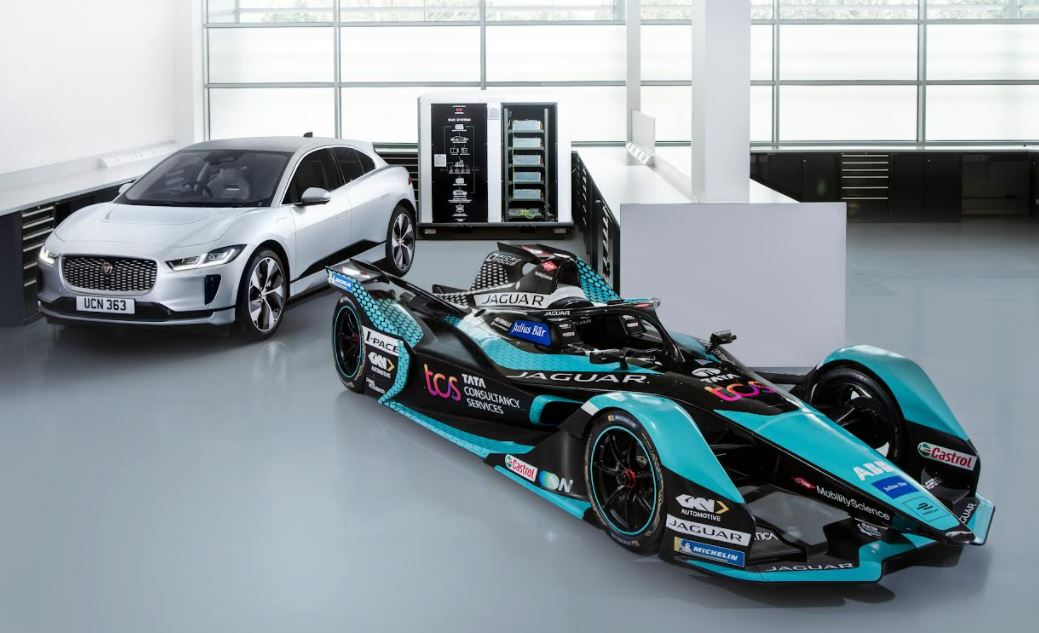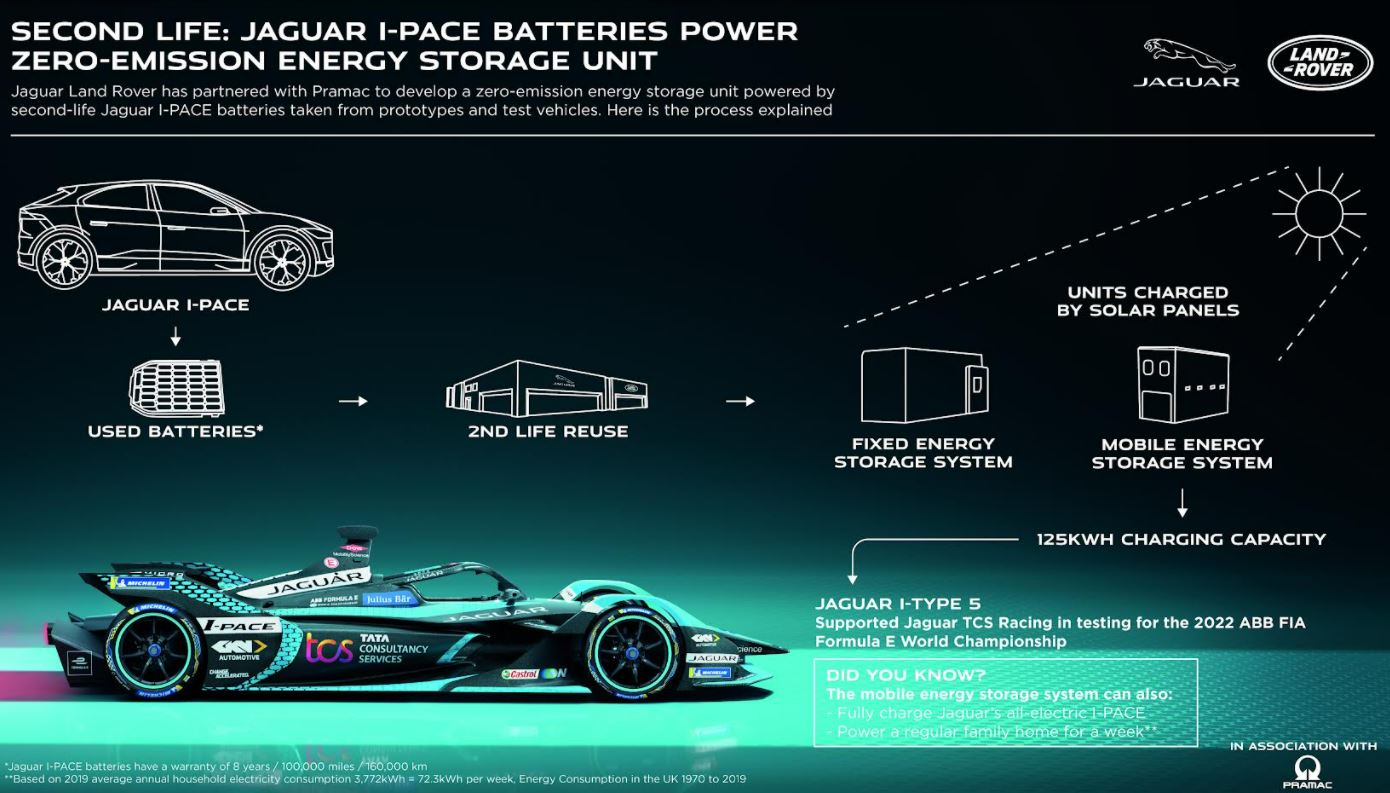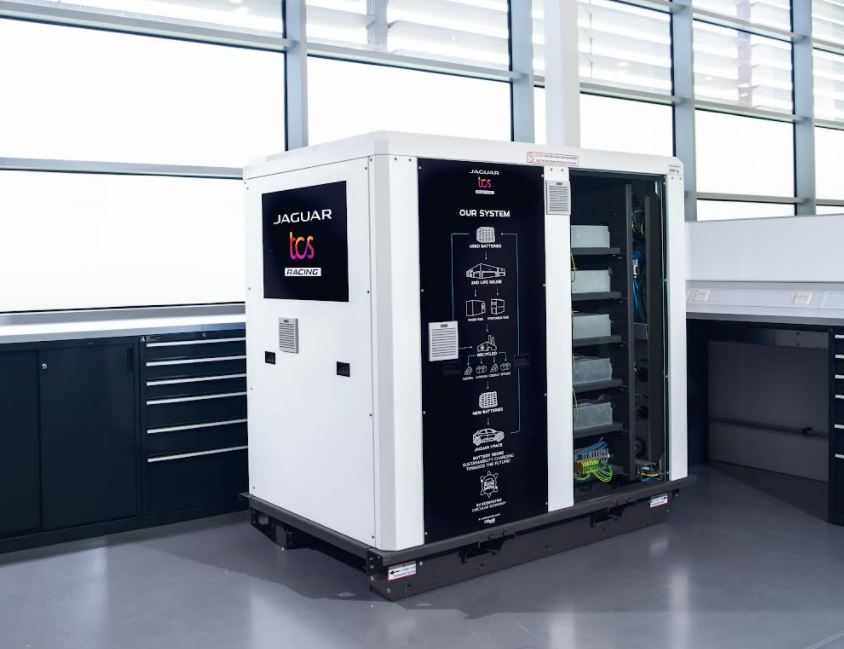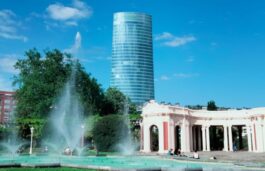Highlights :
- Renewable electricity utilised: ESS is charged using solar panels
- Race-team proven technology: The batteries have been trialled by Jaguar TCS Racing in testing for 2022 ABB FIA Formula E World Championship demonstrating race-to-road-to-race cyclical technology transfer

Marquee auto major Jaguar Land Rover’s engineering team have worked with Pramac to develop a zero-emission energy storage unit powered by second-life Jaguar I-PACE batteries, taken from prototype and engineering test vehicles. Making better use of second life batteries has been a priority for both auto firms, and researchers, to defer the need to send the battery for recycling too early. Stationary storage uses has emerged as a key opportunity.
Called the Off Grid Battery Energy Storage System (ESS), Pramac’s technology – which features lithium-ion cells from one-and-a-half second-life Jaguar I-PACE batteries, supplies zero-emission power where access to the mains supply is limited or unavailable. To showcase its capability, the unit helped Jaguar TCS Racing prepare for the 2022 ABB FIA Formula E World Championship during testing in the UK and Spain, where it was used to run the team’s cutting-edge diagnostic equipment analysing the race cars’ track performance, and to supply auxiliary power to the Jaguar pit garage.

The 2nd Life cycle
The testing and validation of the Off Grid Battery ESS by Jaguar TCS Racing is demonstration of race-to-road-to-race cyclical technology transfer. Learnings from Jaguar TCS Racing have previously informed a software-over-the-air (SOTA) update for I-PACE customers that delivered a real-world range increase of up to 20 km – and now further use cases for the Off Grid Battery ESS around the racing team’s programme are being assessed. The lights go green for rounds four and five of the Formula E World Championship in Rome on 09 and 10 April.
The flagship ESS system has a capacity of up to 125 kWh – more than enough to fully charge Jaguar’s multi-award-winning all-electric I-PACE performance SUV, or to power a regular family home for a week*. Charged from solar panels, the unit is a self-contained solution that consists of a battery system linked to a bi-directional converter and the associated control management systems. Available for commercial hire, the units are fitted with Type 2 Electric Vehicle (EV) charge connections with dynamic control and rated at up to 22 kW AC to allow electric vehicle charging.
Finding a second life for batteries after they have been removed from vehicles can avoid premature recycling and help create a secure supply of rare materials. The state-of-the-art 90 kWh Lithium-ion battery in the Jaguar I-PACE delivers up to 294 kW and 696 Nm of instant torque enabling acceleration from 0-100 Km/h in just 4.8 seconds. The battery was also developed for the durability to match its outstanding performance and efficiency, and I-PACE customers benefit from a battery warranty of 8-years or 160 000 km, during which it must maintain at least 70 per cent State of Health.

Powered by I-PACE
This advanced engineering makes the I-PACE battery perfect for second-life, and even third-life, applications in low-energy situations once battery health falls below the stringent requirements of an electric vehicle. Once the battery does finally come to the end of its usable life, it is 95 per cent recyclable.
Andrew Whitworth, Battery Manager, Circular Economy Team at Jaguar Land Rover, said: “This announcement is a great example of how we will collaborate with industry leaders to deliver our sustainable future and achieve a truly circular economy. We’re delighted to be working with Pramac to use Jaguar I-PACE second-life batteries to provide portable zero-emissions power and supporting Jaguar TCS Racing this season was an excellent opportunity to demonstrate what these units are capable of.”
James Barclay, Team Principal, Jaguar TCS Racing said: “Formula E is the world’s first net carbon zero sport since inception. Jaguar TCS Racing is always looking at improving our carbon footprint and using the storage system provides us with an innovative renewable energy solution for testing. To use second-life Jaguar I-PACE batteries completes this sustainable circle and showcases the team’s Race To Innovate mission.”
Danny Jones, Director, Pramac, said: “We have been privileged to work so closely with Jaguar Land Rover who are a hugely supportive partner in our journey to successfully build a robust product and a commercially viable business case using second-life EV modules. This brings a new element to the sustainability story as a manufacturer of energy efficient and carbon reducing technology. We look forward to continuing the journey with Jaguar Land Rover and providing innovative charging infrastructure solutions to support the electrification of their class-leading vehicles.”





























